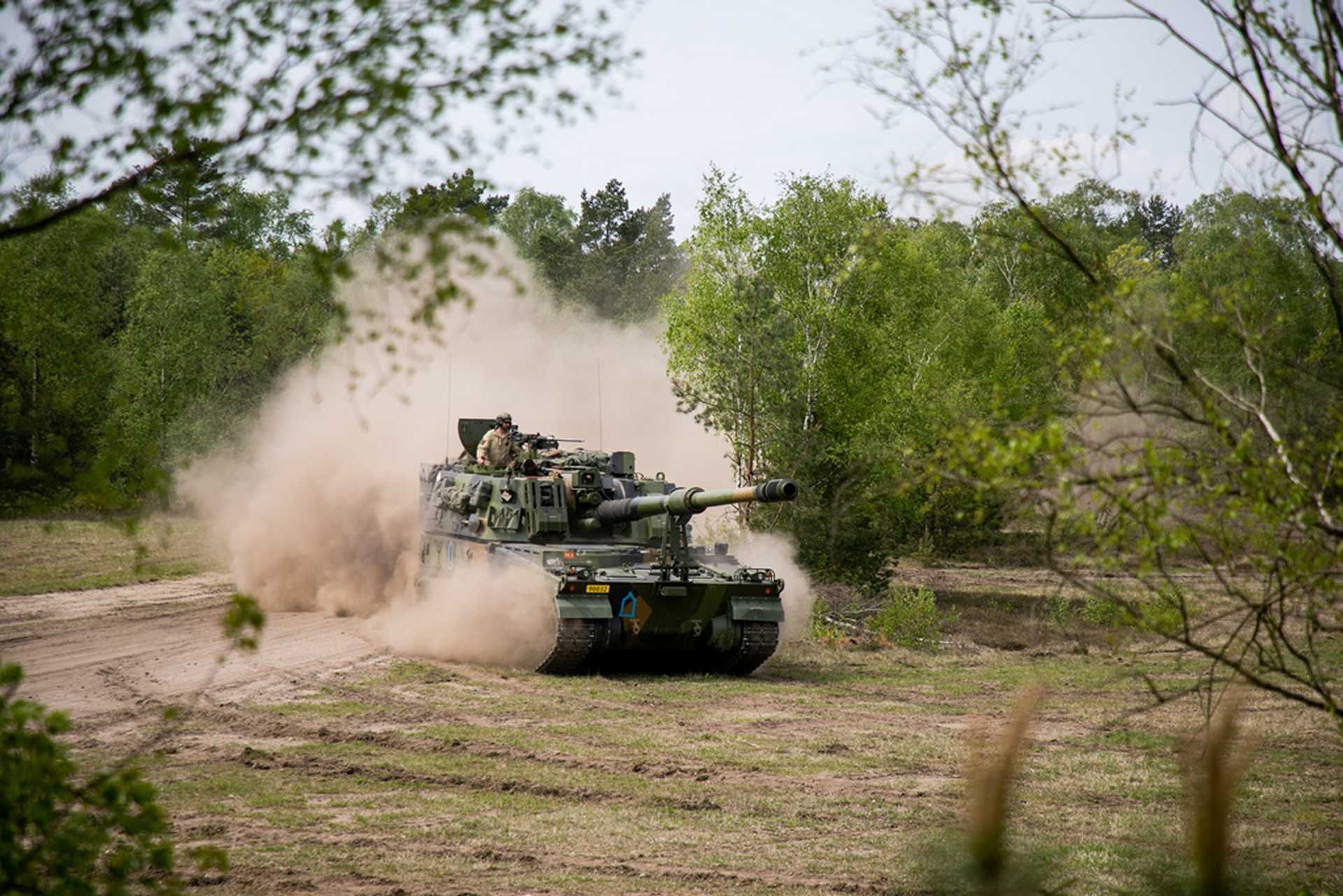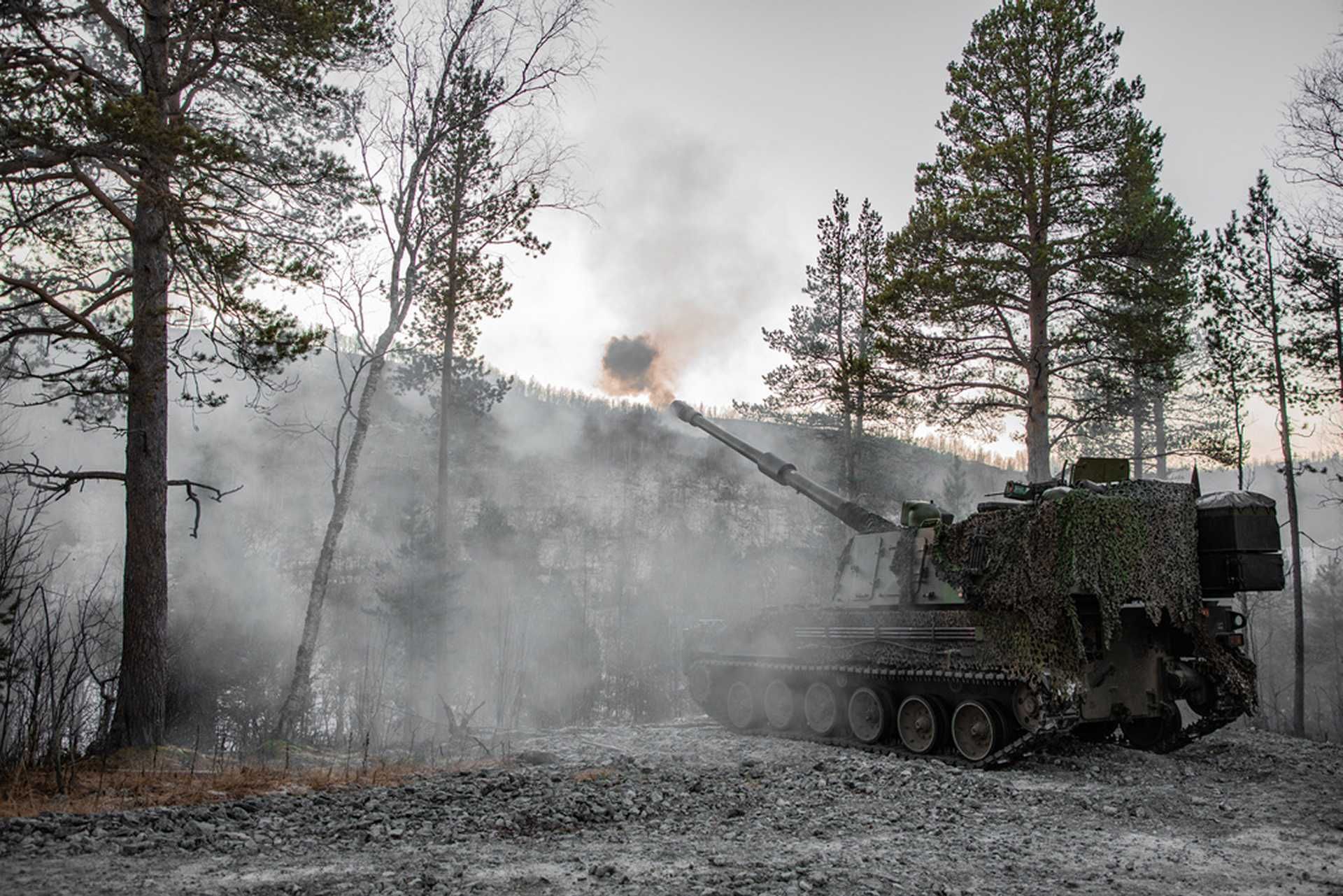Breaking News
Fourth K9 User Club event in Poland reinforces K9 Thunder’s position as the future standard for self-propelled howitzers.
On April 8, 2025, the South Korean company Hanwha Aerospace announced that military representatives from nine countries gathered in Krakow, Poland, to participate in the fourth K9 User Club event, held from April 8 to 10. The meeting brings together more than 150 military and industry delegates to share practices related to the operation, training, and maintenance of the K9 Thunder 155mm/52-calibre self-propelled howitzer. Hosted by the Polish Army, this iteration of the user club is currently the largest since the establishment of the K9 User Community in 2022.
Follow Army Recognition on Google News at this link

According to Hanwha, approximately 1,800 K9 systems are currently in service, and several hundred more are expected to be fielded in the near future. (Picture source: Hanwha Aerospace)
The purpose of the K9 User Club is to facilitate the exchange of operational knowledge, experience, and technical information among countries operating or preparing to operate the K9 artillery system. Participating countries that currently operate the K9 system include South Korea, Poland, Norway, Finland, Estonia, Australia, and Romania. The United States and Sweden are attending the event as observers. Industry participants from Poland, Norway, Finland, and Denmark are also attending to discuss potential cooperation.
The event began with national presentations on K9 operational experiences. Representatives from South Korea’s Defense Acquisition Program Administration and the Agency for Defense Development presented the ongoing development of the K9 system, including projects related to manned-unmanned teaming and autonomous functions. Hanwha Aerospace introduced its AI-based maintenance, repair, and overhaul platform known as TOMMS, which allows for real-time equipment monitoring, remote technical support, and mobile services independent of time and location.
On April 9, participants will attend separate sessions focusing on system operation, maintenance procedures, training frameworks, and ammunition compatibility. On April 10, the user group will visit Huta Stalowa Wola S.A.’s artillery manufacturing facility and the 18th Artillery Brigade in Nowa Dęba to observe field deployments of the K9. Colonel Wojciech Dalka, Chief of the Equipment and Development Branch within the Field Artillery Directorate of the Polish Armed Forces, stated that Poland, as the NATO member with the largest K9 fleet, is the host of this year’s event. The gathering, according to Dalka, is intended to support efforts to improve interoperability and operational performance among K9 users.
Vice President Cho Sang-hwan, Head of the MRO Business Group at Hanwha Aerospace, noted that the fourth K9 User Club has a wider scope than previous iterations, with increased focus on the system’s performance and interoperability. He also stated that the company is emphasizing improvements to the K9 and to its support services based on feedback from operators.

Future versions, including the K9A3 and K9A4, are being developed with a focus on higher automation and integration into network-centric warfare systems. (Picture source: Norwegian MoD)
According to Hanwha, approximately 1,800 K9 systems are currently in service, and several hundred more are expected to be fielded in the near future. The K9 is operated in various forms by South Korea, Poland, Norway, Finland, Estonia, India, and Türkiye. Australia, Egypt, and Romania are in the process of introducing K9 systems into their inventories. Ongoing development includes fully automated turret systems and efforts to enhance automation, firepower, survivability, digital systems, and range.
The K9 Thunder was developed in South Korea by the Agency for Defense Development in cooperation with Samsung Aerospace Industries, Kia Heavy Industry, and Poongsan Corporation. Development began in 1989 with the objective of replacing the M107 and K55 (KM109A2), which lacked range in comparison to the North Korean M-1978 Koksan. The program drew on experience from the KH178 and KH179 towed howitzers and prioritized range, firing speed, and mobility. Following testing and resolution of design issues starting in 1992, the K9 entered service in 1999.
The platform includes a 155mm L52-calibre CN98 main gun, capable of firing NATO-standard ammunition, including the L15A1 projectile, at ranges of 18 to 50 km depending on ammunition type. It features an automatic loading system and digital fire control. It can fire three rounds in 15 seconds and sustain six to eight rounds per minute. It uses a hydropneumatic suspension system and is powered by a 1,000 hp engine. The K9’s armor is made from MIL-12560H steel and offers protection against projectile fragments, armor-piercing munitions, and anti-tank mines. Since production began in 1998, over 1,800 units have been produced.
The K9 is compatible with a range of NATO and U.S. munitions. It has been tested with the M982 Excalibur and XM1113 rocket-assisted projectile, achieving extended ranges up to 60 km. The system holds over 50% of the global self-propelled howitzer market, including wheeled and tracked platforms.

The K9 includes a 155mm L52-calibre CN98 main gun, capable of firing NATO-standard ammunition, including the L15A1 projectile, at ranges of 18 to 50 km depending on ammunition type. (Picture source: Norwegian MoD)
The K9 family includes multiple variants and derivative systems. The K10 ammunition resupply vehicle shares the same chassis and supports operational K9 units. The K9A1 features upgrades in fire control, crew comfort, and navigation. The K9A2 adds automated loading, reducing crew size from five to three. Several countries have developed localized versions. Poland’s AHS Krab, referred to as K9PL or PK9, incorporates national communications systems, an auxiliary power unit, and filtration systems. Türkiye fields the T-155 Firtina, Australia the AS9 Huntsman, Finland the K9 Moukari, Estonia the K9 Kõu, and India the K9 Vajra-T, the latter assembled by Larsen & Toubro with local components.
Future versions, including the K9A3 and K9A4, are being developed with a focus on higher automation and integration into network-centric warfare systems. Poland is also adapting the Krab/K9 chassis for a new tracked infantry fighting vehicle designated CBWP (Ciężki Bojowy Wóz Piechoty). Scheduled for delivery in 2025, the CBWP will carry three crew and eight dismounted personnel and will be equipped with the ZSSW-30 remotely operated turret.
The K9 User Club was initially launched in February 2022 to address the operational needs of a growing international community of K9 operators. The first user meeting took place in April 2022 in Changwon, South Korea. That gathering included military logistics and maintenance representatives, as well as local industrial partners, including Universal Motion Simulation from Australia, which signed a memorandum of understanding with Hanwha Defense Australia in 2021 for driving simulator development.
The original meeting included breakout sessions on system operation, training, and maintenance, allowing member states to share their national approaches and technical adaptations. The user club is expected to continue to hold regular meetings, rotating among host nations, to support ongoing coordination between operating countries and supporting industry partners.


























